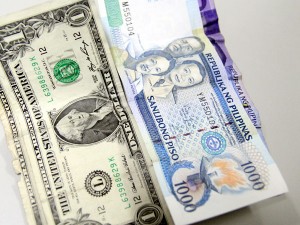The country’s dollar income surged in September on the back of increased investments, the recovery in the exports sector, and the steady flow of money transfers from migrant workers.
According to the Bangko Sentral ng Pilipinas (BSP), the country’s balance-of-payments (BOP) swung to a surplus in September from a deficit during the “ghost” month of August. In effect, the BSP said, the country earned more dollars than it spent.
“Data from exports, remittances, and BPO (business process outsourcing) receipts are still not available, although initial indicators show their continued strength,” BSP Deputy Governor Diwa C. Guinigundo said.
The country’s BOP surplus reached $456 million, better than the $318 million deficit posted in August.
This brought the country’s year-to-date surplus to $3.8 billion. The central bank expects the country’s yearend BOP surplus to reach $4.4 billion.
The country’s BOP position reflects all transactions between the Philippines and the rest of the world. Apart from remittances, export revenues, and investments, items like debt payments for foreign obligations and payments for imported goods are also counted.
The main driver for the turnaround in September, the BSP said, were inflows of foreign investments—both short-term portfolio and longer-term direct placements.
Foreign portfolio investments, or placements in local stocks and bonds, reached $682 million net of divestments in September. This was a turnaround from the $441 million in net outflows registered the month before.
The latest report from the BSP also showed that foreign direct investments more than tripled to $533 million in July over the same period last year.
Direct investments are money spent on new manufacturing facilities or loans by multinationals to their local subsidiaries and affiliates.
Based on the latest BSP data, cash remittances as of August hit $1.92 billion—6.8 percent higher than that of the same month in 2012.
The BSP expects remittances to grow by at least 5 percent this year to $22.5 billion.
Remittances are the country’s largest source of foreign exchange income. These money transfers from migrant workers also support domestic spending, which accounts for around 70 percent of the country’s economic activity.
“These inflows were supported by BSP investment income from abroad and national government deposits of foreign exchange with the BSP,” Guinigundo explained.
